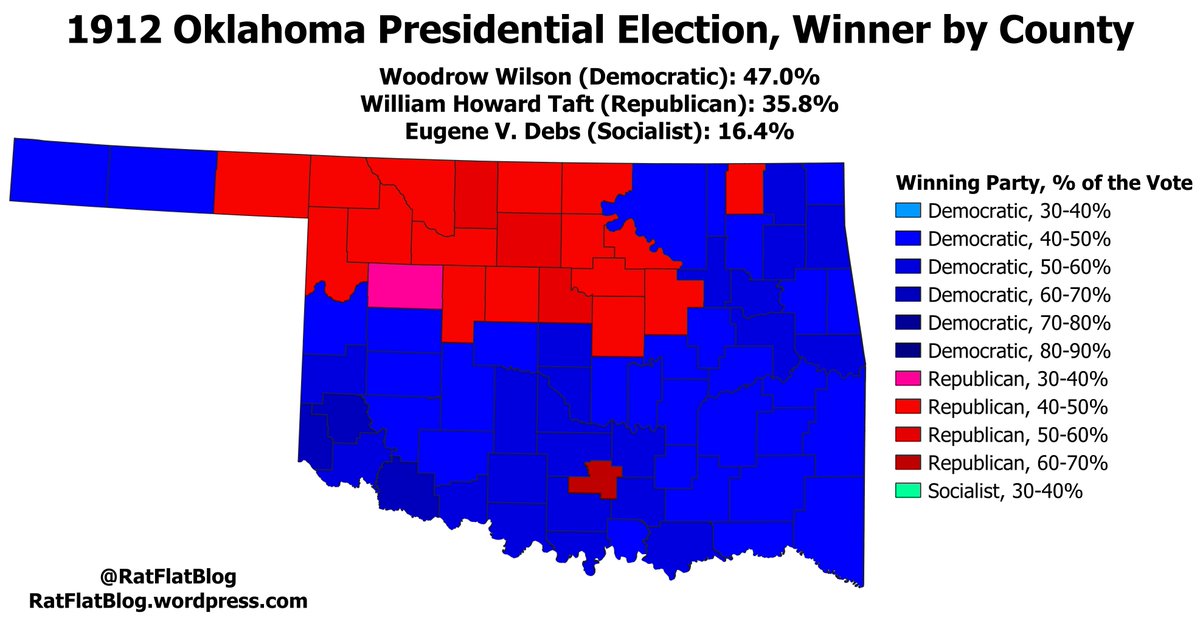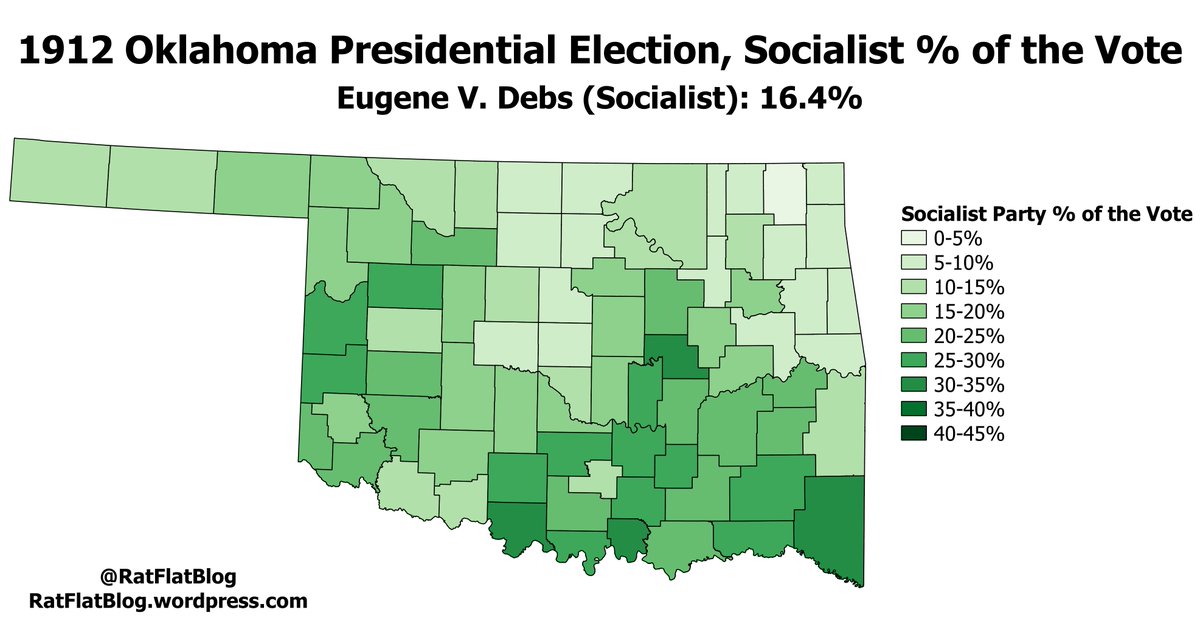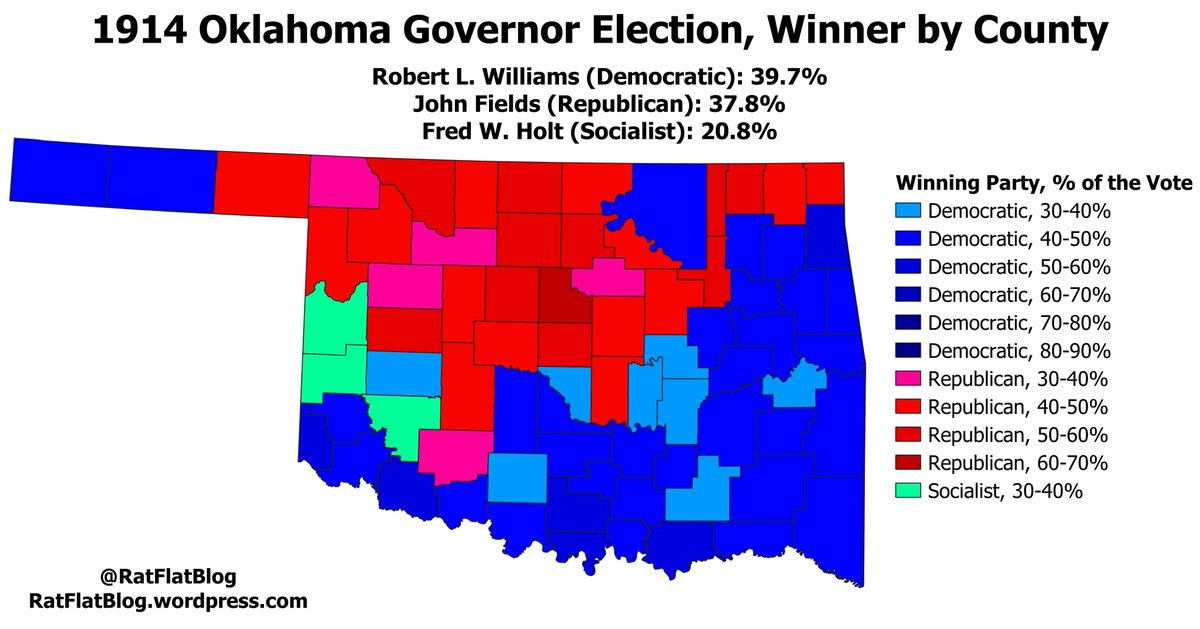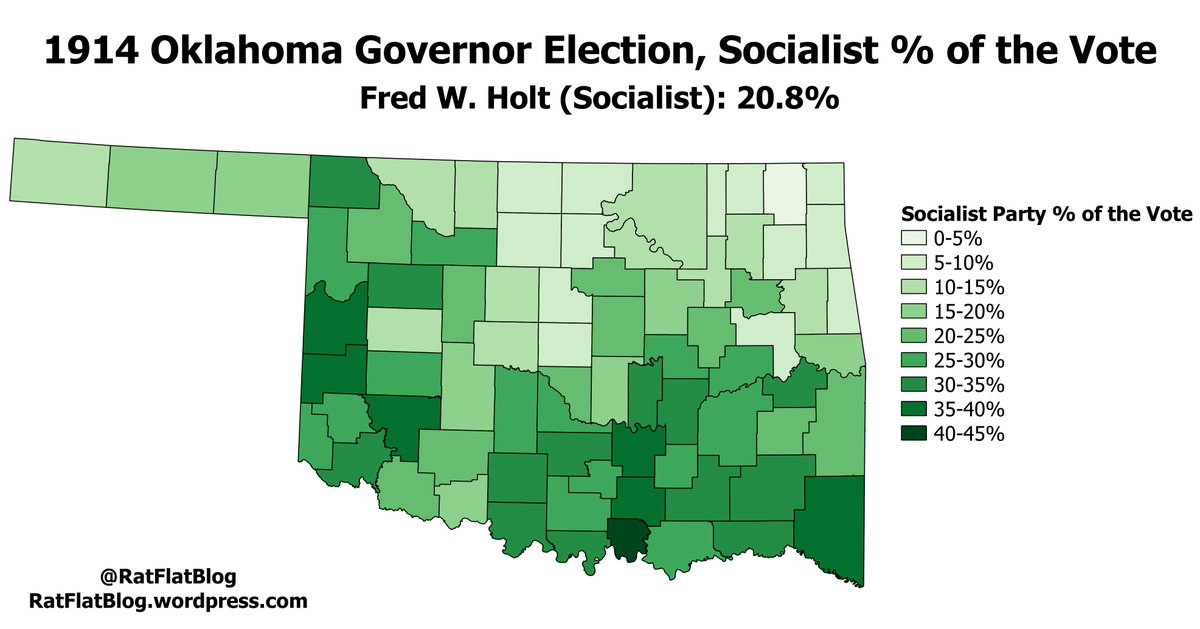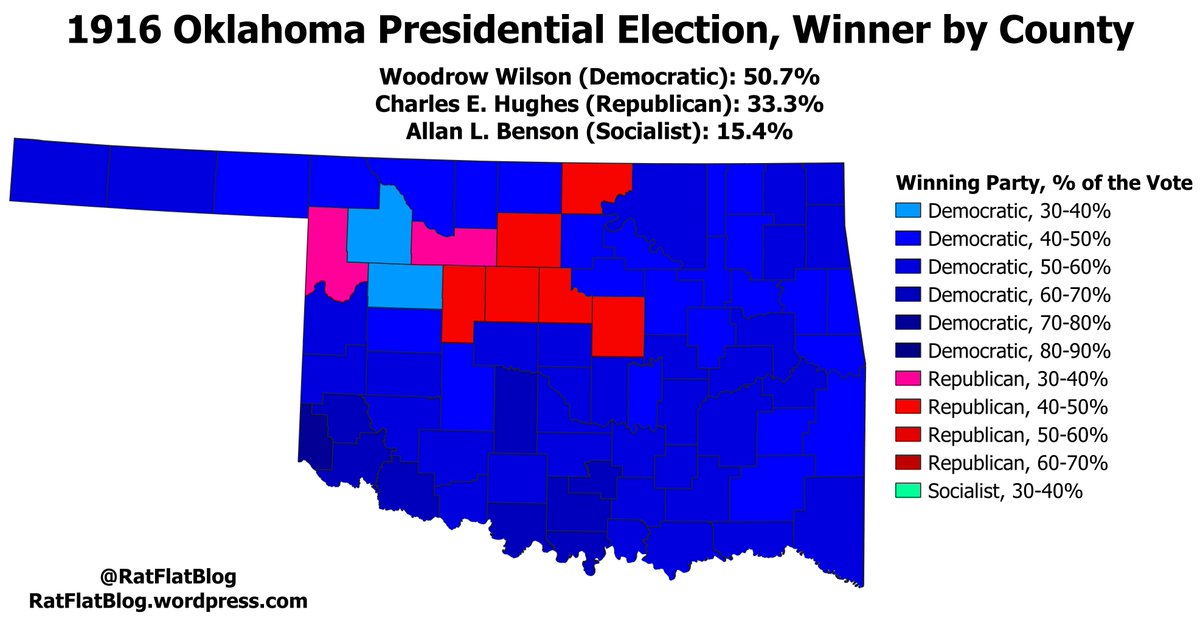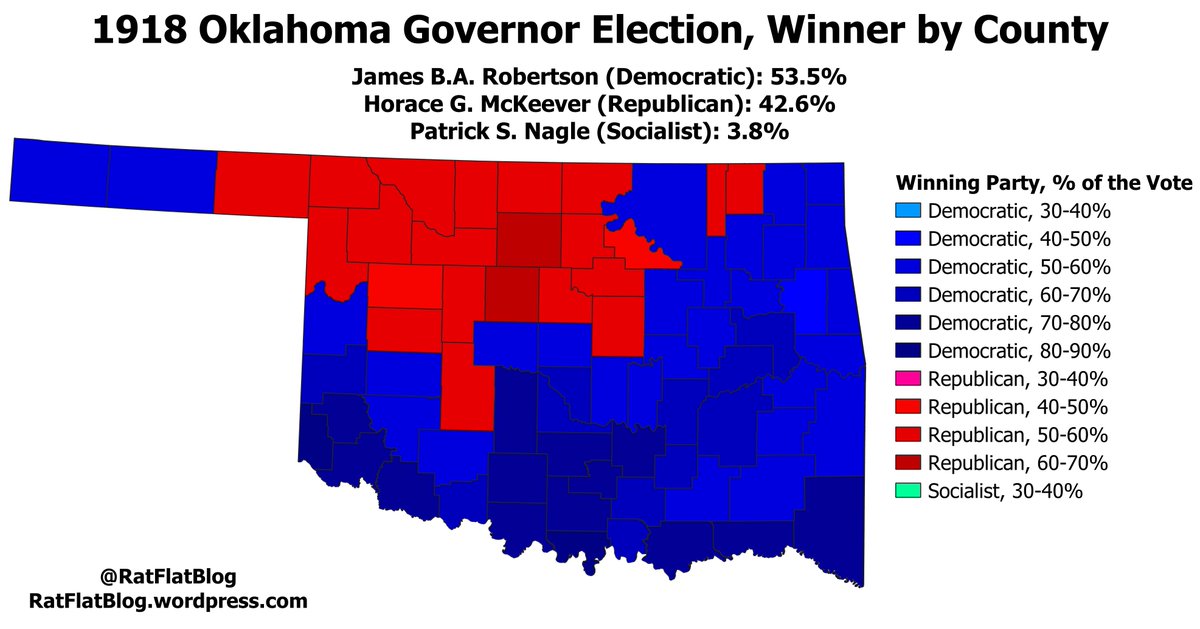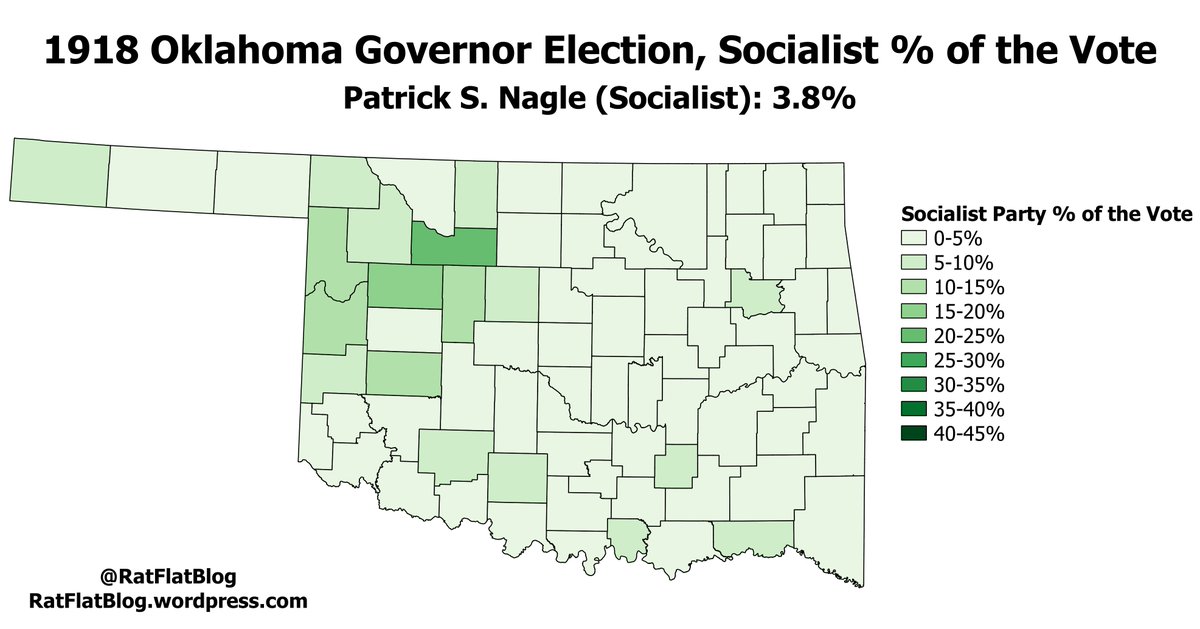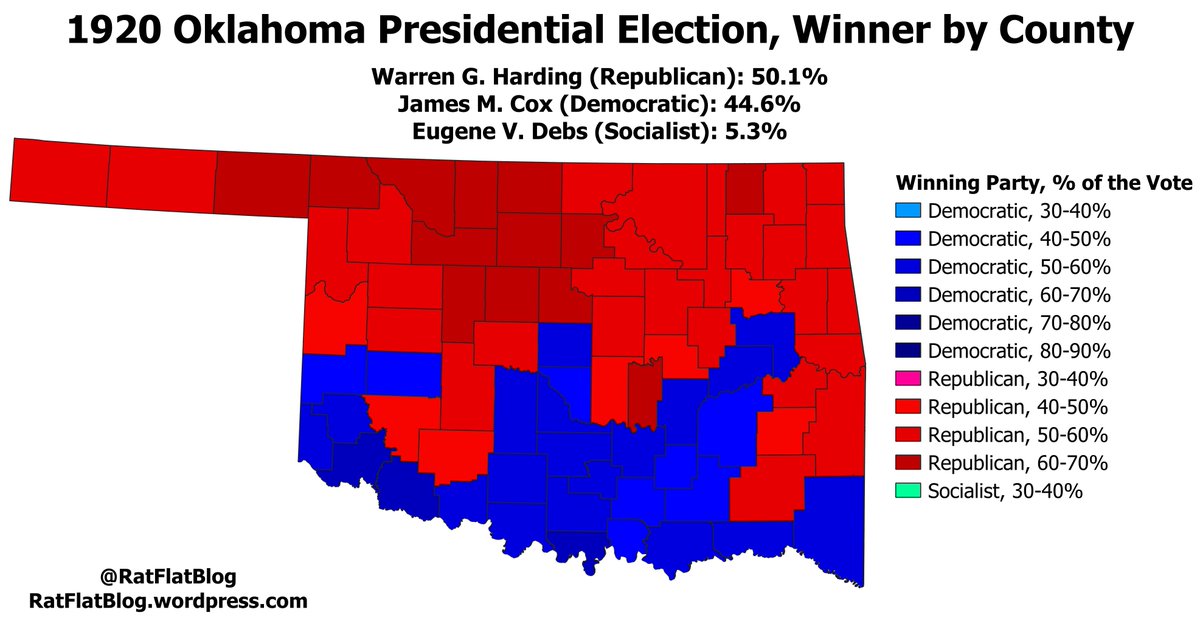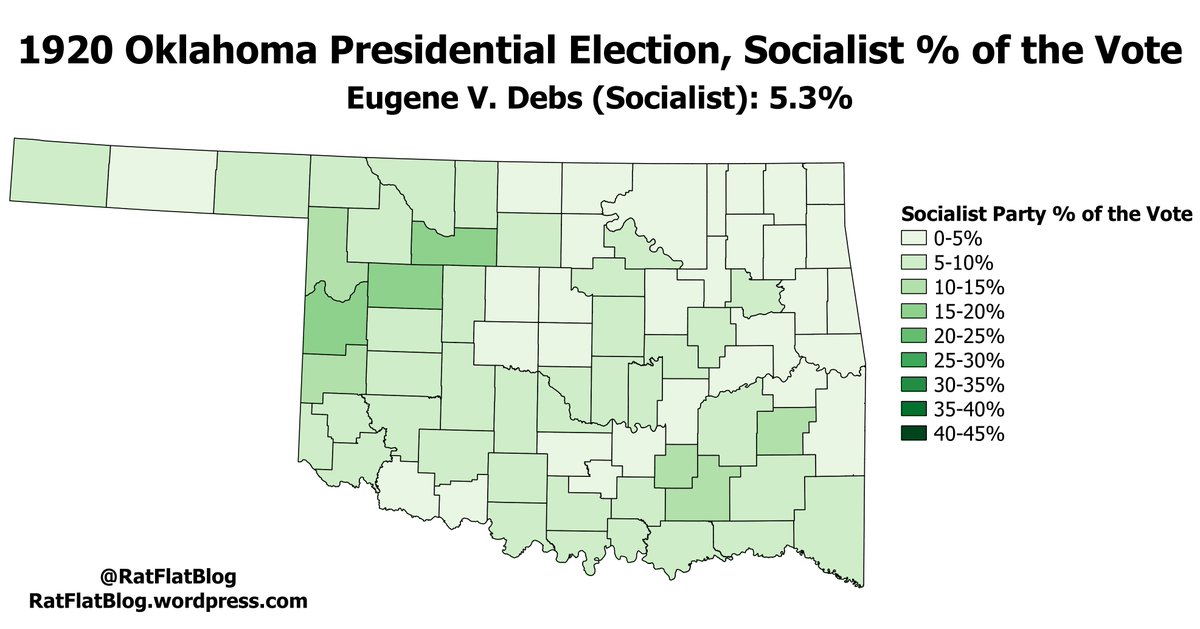#ElectionTwitter I made some maps of the Oklahoma Socialist Party& #39;s vote from 1912-1920. In the early 20th century the state was one of the two or three strongest for the Socialists.
Thread with maps below, Blog Post with maps here:
#socialism #Oklahoma https://ratflatblog.wordpress.com/2020/01/12/red-state-the-socialist-party-in-oklahoma/">https://ratflatblog.wordpress.com/2020/01/1...
Thread with maps below, Blog Post with maps here:
#socialism #Oklahoma https://ratflatblog.wordpress.com/2020/01/12/red-state-the-socialist-party-in-oklahoma/">https://ratflatblog.wordpress.com/2020/01/1...
The Socialist Party rapidly gained ground in Oklahoma in the first elections after statehood. In the first governor election in 1907 the Socialists won 3.8% of the vote. In the 1908 Presidential race Debs received 8.5%, while the Socialists got 9.9% in the 1910 governor election.
Oklahoma Socialists packaged their ideology with both patriotism (Thomas Jefferson’s rhetoric about the “common man”), and with religion (claiming Jesus as the “first Socialist”). This helped make Socialist ideology less alien to the farmers of Oklahoma.
http://www.okreadsok.org/sixpack/thirdsixpack/agrarian/agrarianexcerpt.html">https://www.okreadsok.org/sixpack/t...
http://www.okreadsok.org/sixpack/thirdsixpack/agrarian/agrarianexcerpt.html">https://www.okreadsok.org/sixpack/t...
1912 was the Socialists peak nationwide, as Eugene Debs got 6% of the vote. In Oklahoma he got 16.4%, his second-best result. Democrat Woodrow Wilson carried the state easily, dominating in the southern and eastern parts of the state with 47% of the vote (and won the Presidency).
The Oklahoma Socialist Party’s greatest strength was in the old Indian Territory of southern Oklahoma, as well as the counties along the western edge of the state. Debs highest % of the vote in the state was in Marshall County in the south of the state, where he received 34.9%.
The Socialists peaked in Oklahoma in 1914. That year they had 984 local chapters and 12,000 registered members statewide. Over 175 Socialists were elected to local office, including 6 state legislators. They received 20.8% of the vote in the 1914 Gov race and carried 3 counties
Marshall County was once again the Socialists best county: they received 41% in Marshall but were narrowly beaten by the Democrats at 43%. Across much of southern Oklahoma the Socialists were the second-place finishers, displacing the Republicans as the Democrats main challengers
Eugene V. Debs decided against a fifth straight run for the Presidency in 1916 running instead for Congress in his home-state of Indiana. New York newspaper editor Allan L. Benson was the Socialist Partys nominee in 1916, running on a strident opposition to any involvement in WW1
The Socialist vote declined slightly from 1912 to 1916. They weakened in the old Indian Territory in the south of the state, but this was partially offset by increasing strength in the western part of the state. Dewey County in western OK was the Socialists best result, at 32.9%
In 1918 the Socialist Party& #39;s vote collapsed. The party had spoken out strongly against the US entry into WW1 in 1917. In response their members were accused of disloyalty and arrested, socialist newspapers were shutdown, and local chapters of the party were shuttered.
The Socialist vote in southern Oklahoma collapsed, and the Socialists did only marginally better in their former stronghold of western OK. The Socialists best result was in Major County, where they got 20.8% of the vote, matching but not exceeding their 1914 statewide percentage
The Oklahoma Socialists also contributed to a multi-racial resistance against the draft known as the "Green Corn Rebellion." Many of these draft-resisters were members of the Working Class Union, a secretive group which engaged in militant action to defend tenant farmer& #39;s rights.
Believing WW1 to be a "a rich man& #39;s war, and a poor man& #39;s fight," a group of hundreds of Whites, Blacks, and American Indians gathered at the farm of an aging Socialist. They decided to march on DC to end the war, but local authorities quickly and violently put down the rebellion
Three resisters were killed and hundreds were arrested. This rebellion and reaction occurred in 1917, and contributed to the overall climate of violence, intimidation, and rising patriotism that led to the collapse of the Socialist Party in Oklahoma
https://www.okhistory.org/publications/enc/entry.php?entry=GR022">https://www.okhistory.org/publicati...
https://www.okhistory.org/publications/enc/entry.php?entry=GR022">https://www.okhistory.org/publicati...
By 1920 WW1 had ended but the Socialist Party was still in shambles. Eugene V. Debs had been arrested in 1918 for speaking out against the war, but had decided to run for president from jail in 1920. He showed a surprising resilience, winning 3.4% of the vote nationwide.
But while Debs exceeded Benson& #39;s 1916 result nationwide and showed strength in northern states like Wisconsin and New York, his results in Oklahoma were disappointingly low. He received only 5.3% of the vote, as Oklahoma was carried by a Republican for the first time in history.
In 1922 the Socialists ran a candidate for governor, but he received a pitiful 0.7% of the vote. In 1926 the Socialist share dropped to 0.3%. In 1930 Oklahoma& #39;s Socialist Party failed to even run a candidate for governor, and the party faded out of existence.
In 2016, a decade after the peak of Socialism in Oklahoma, the state& #39;s Democratic Primary was won by Bernie Sanders, a self-described socialist. This was viewed as more of a protest vote against Clinton from the right-wing of the party than an endorsement of Socialism in Oklahoma

 Read on Twitter
Read on Twitter